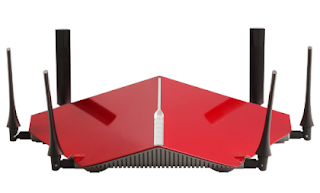If you are craving for a high-speed internet connection without the entering any passwords or dealing with login names, then you may want to deal with the Time Warner Cable.
The company has has turned on the Hotspot 2.0 capabilities across its public Wi-Fi network, letting customers with newer smartphones or tablets connect to its 33,000-node wireless network without entering any sensitive information. Time Warner VP of Wireless Products Rob Cerbone confirmed to Gigaom that it has upgraded the majority network with Hotspot 2.0 software, and its broadband customers have been connecting to it since the early 2014.
Hotspot 2.0 is a technology designed to make public Wi-Fi work like cellular networks by automatically recognizing and connecting devices that have permission to access any given access point. Typically consumers trying an ISP or carrier’s Wi-Fi network have to go through a login portal on their web browsers or download special connection software, limiting the hotspots’ appeal to consumers, especially those connecting with mobile devices.
Hotspot 2.0 has actually been around for quite a while — the Wi-Fi Alliance began certifying devices two years ago under its Passpoint program — but carriers and ISPs have been slow to adopt it. Hotspot provider Boingo began offering it to its customers in February, but on a limited basis in 21 airports, making Time Warner’s launch the first large-scale implementation of Hotspot 2.0 in the U.S.
Time Warner is looking at Hotspot 2.0 differently than a carrier would, Cerbone said. While mobile operators are looking to offload data traffic from their cellular networks, Time Warner doesn’t have a mobile network. Wi-Fi is more a means to give its cable customers access to broadband connections outside their homes, which is why it has focused its hotspot efforts in key markets in its cable territory. Today its Wi-Fi systems are concentrated in commercial businesses and heavily trafficked outdoor locations in Southern California, New York City, Austin, Charlotte, Kansas City, Myrtle Beach and Hawaii.
Many of Time Warner’s customers weren’t accessing the network for two reasons, Cerbone said. To use it customers had to specifically search out and log into to hotspots, and because of the nature of portal-based authentication, those connections were inherently insecure. Hotspot 2.0 largely eliminates both obstacles. After logging in for the first time with a Passpoint-certified device, devices will automatically discover and connect to TWC’s entire hotspot network. And those links will be encrypted using WPA2 security. Basically, Time Warner customers will get the same kind of experience they get on their home Wi-Fi network.
"This was a good opportunity to get a secure connection to our customers," Cerbone said. The network has only been live for a few weeks, but Time Warner has already seen a 15 percent boost in users who have never accessed the network before suddenly connecting to Wi-Fi, Cerbone said.
The company has has turned on the Hotspot 2.0 capabilities across its public Wi-Fi network, letting customers with newer smartphones or tablets connect to its 33,000-node wireless network without entering any sensitive information. Time Warner VP of Wireless Products Rob Cerbone confirmed to Gigaom that it has upgraded the majority network with Hotspot 2.0 software, and its broadband customers have been connecting to it since the early 2014.
Hotspot 2.0 is a technology designed to make public Wi-Fi work like cellular networks by automatically recognizing and connecting devices that have permission to access any given access point. Typically consumers trying an ISP or carrier’s Wi-Fi network have to go through a login portal on their web browsers or download special connection software, limiting the hotspots’ appeal to consumers, especially those connecting with mobile devices.
Hotspot 2.0 has actually been around for quite a while — the Wi-Fi Alliance began certifying devices two years ago under its Passpoint program — but carriers and ISPs have been slow to adopt it. Hotspot provider Boingo began offering it to its customers in February, but on a limited basis in 21 airports, making Time Warner’s launch the first large-scale implementation of Hotspot 2.0 in the U.S.
Time Warner is looking at Hotspot 2.0 differently than a carrier would, Cerbone said. While mobile operators are looking to offload data traffic from their cellular networks, Time Warner doesn’t have a mobile network. Wi-Fi is more a means to give its cable customers access to broadband connections outside their homes, which is why it has focused its hotspot efforts in key markets in its cable territory. Today its Wi-Fi systems are concentrated in commercial businesses and heavily trafficked outdoor locations in Southern California, New York City, Austin, Charlotte, Kansas City, Myrtle Beach and Hawaii.
Many of Time Warner’s customers weren’t accessing the network for two reasons, Cerbone said. To use it customers had to specifically search out and log into to hotspots, and because of the nature of portal-based authentication, those connections were inherently insecure. Hotspot 2.0 largely eliminates both obstacles. After logging in for the first time with a Passpoint-certified device, devices will automatically discover and connect to TWC’s entire hotspot network. And those links will be encrypted using WPA2 security. Basically, Time Warner customers will get the same kind of experience they get on their home Wi-Fi network.
"This was a good opportunity to get a secure connection to our customers," Cerbone said. The network has only been live for a few weeks, but Time Warner has already seen a 15 percent boost in users who have never accessed the network before suddenly connecting to Wi-Fi, Cerbone said.

No comments:
Post a Comment